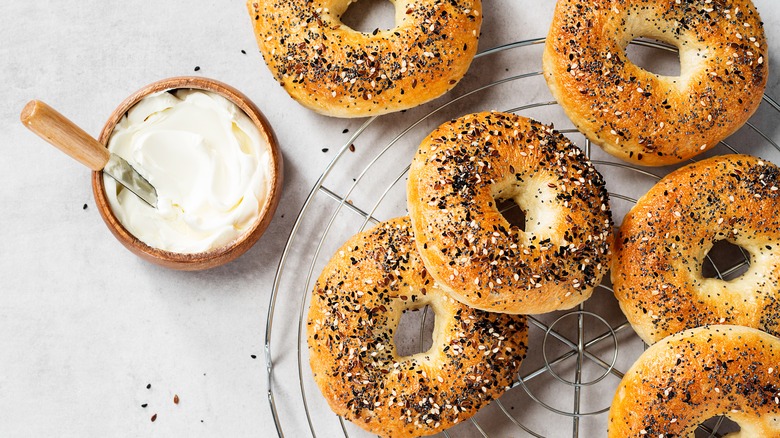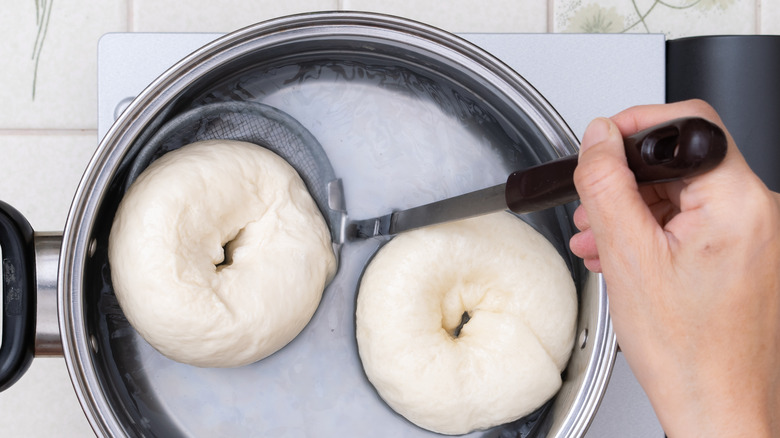Expert Tips For Perfect Homemade Bagels
Determining how best to dress a bagel may seem like the most pertinent of bagel dilemmas and for those that are simply buying the baked rings, it may be. However, for whoever is brave enough to make the doughy delights from scratch, there are more pressing concerns, namely how to craft the perfect bagel. Luckily, Amy Emberling of Zingerman's Bakehouse was kind enough to share her expertise with Tasting Table on what it takes to make the best bagels.
As one of the original bakers and current managing partners of the Ann Arbor, Michigan-based bakery and school, Emberling could list endless ways to improve upon baked goods, from the recipes used to the processes followed. However, her advice is instead much simpler. When asked about the key to making bagels at home, Emberling offered, "Neuroticism?"
Standing by the importance of paying attention to the minute details and overlooked processes, Emberling explains that the secret to whipping up a batch of crisp, yet chewy bagels that are sure to impress lies in using the proper tools and proper execution of steps.
Boiling bagels the right way and using a baking stone
While you may be tempted to nix the boiling process as bagels are also destined to cook in the oven, Emberling emphasizes that it is a must. One of the most important parts of the process, allowing the rings to briefly bathe in water (or a mixture of water and salt or sweetener) creates a barrier between crust and crumb as starches gelatinize. Though the process is brief, lasting anywhere between 30 seconds to a couple of minutes, boiling is responsible for giving bagels their lustrous exterior along with their springy and dense interior. But, what's a boiled bagel without a bake?
As bagels are fished out of the pot, rather than simply toss the half-cooked rings onto a sheet pan, Emberling recommends baking them on a preheated baking stone — the longer it's been preheating, the better. Holding onto more heat and creating a better distribution of it, using a stone can help bagels to develop a golden crust without drying out the crumb too extensively. Of course, bagels will also bake more evenly and consistently, which is a huge bonus for swapping sheets and stones.
Follow each step with precision
We won't lie to you, the process required to make bagels at home can be a tough one. From measuring to mixing, shaping to boiling, and topping to baking, it's natural to feel overwhelmed. Not to mention that within each of these vital steps are a bunch of particulars often regarding time frames and temperatures that need to be considered, in order to achieve a good-looking and even better-tasting bagel. Evidently, cutting corners in the name of saving time will only lead to disaster, which is why Emberling urges, "Don't skip steps."
Yet, while the advice is self-explanatory, it might seem easier said than done for a novice bagel baker. However, we're here to suggest a way to make the process significantly more manageable. All you need to do is spend some time planning ahead, figuring out which ingredients and tools are needed, in addition to navigating how to best execute the process. As a result, this will help you to stay organized and on task, in addition to increasing efficiency. With a plan of action in place, there's no reason why your next batch of bagels won't be a success. As the saying goes, where there is a will, there is a way — and where this is a way, there are better-made bagels.


